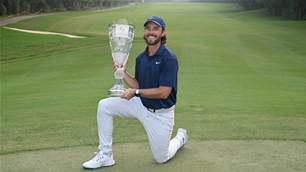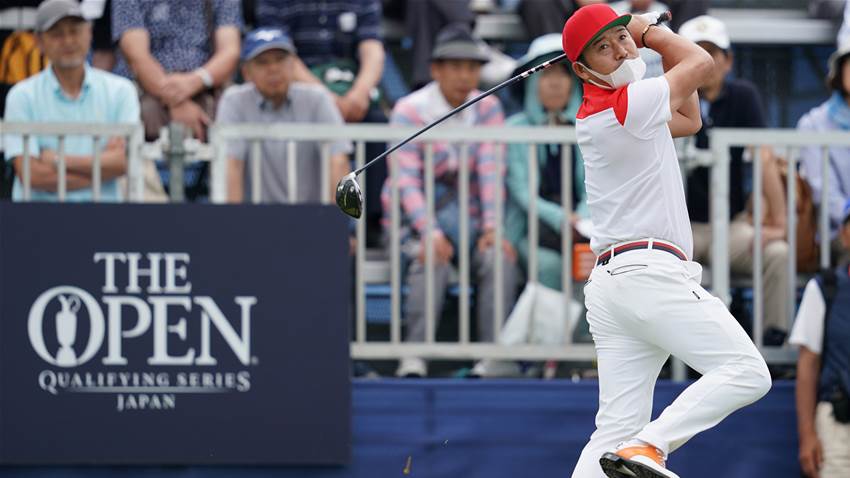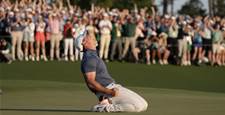“Just as no two individual fingerprints are identical, no two golf swings are ever exactly the same.” – David Leadbetter.
From Ho Sung Choi to Eamonn Darcy, each of the following 10 players have relied on unorthodox swings to find success at the highest levels of our great game.
JIM FURYK
David Feherty once described Furyk’s swing as “an octopus falling out of a tree” and “someone trying to kill a snake in a phone booth”.
Despite what you may think of his looping swing, Furyk has won 17 times on the PGA Tour, shot a round of 58, and lifted the FedExCup in 2010 when he was also named the PGA Tour Player of the Year.
The 50-year-old American sets up very close to the ball and keeps his hands extremely close to his body at address and impact.
Although his takeaway appears relatively conventional at first, Furyk quickly sends the club straight upward and his left arm is nearly vertical to the ground at the top of his swing. He then rotates his hips and knees to create the necessary room for the downswing.
HO SUNG CHOI
The 46-year-old South Korean has played professionally throughout Asia since 2001 and began to attract worldwide attention in the build up to his first competitive appearance in the United States last year.
Choi, whose American debut came at the AT&T Pebble Beach Pro-Am, possesses one of the most unique swings on the planet – one which has been dubbed “The Fisherman Swing” due to his elaborate follow through.
The World No.208, who continues to ply his trade on the Japan Golf Tour, has captured four career victories with his unconventional swing.
MOE NORMAN
Many people consider the late Moe Norman to be the greatest ball-striker of all time – something the Canadian always attributed to his eccentric, yet simple and repeatable single-plane swing.
Interestingly, Norman’s clubhead began at least one foot behind the ball at address. His left arm remained straight throughout the swing, while his trail arm folded to help produce speed.
Norman’s key move, however, came during his downswing transition. “The vertical drop” – as he often described it – was his feeling of how the club moved from an on-plane position at the top of his swing to the flattening of the plane in his downswing.
BRYSON DECHAMBEAU
The 26-year-old is one of Moe Norman’s most successful disciples and has adapted the single-plane swing and used his one-length clubs to capture seven professional titles.
There are notable differences between the two swings, however.
DeChambeau, who has been labelled “The Scientist” for his academic approach to the game, stands closer to his ball at address than Norman did.
The American also rotates his torso more than 90 degrees in the backswing and straightens his left leg at impact, while Norman tried to eliminate over-rotation and would keep both feet planted to the ground, bending his lead leg to take stress off his back.
MATTHEW WOLFF
One of last year’s most promising PGA Tour rookies, Wolff, 21, claimed his maiden Tour victory at the 3M Open in what was just his fourth career start.
The reigning NCAA Division 1 Men’s champion is currently ranked 21st on the PGA Tour for average driving distance at 283 metres – distance which is generated by quite an interesting-looking golf swing …
Wolff broke his collarbone during a game of touch football when he was 16 years old and now produces significantly less shoulder rotation than his fellow competitors.
The American’s trademark move, however, has got to be the bouncing squat that comes at address before his looping swing begins.
EAMONN DARCY
The four-time European Tour winner owned such an unusual swing that Frank Nobilo once described it as “someone jingling a handful of keys … because keys never stay together”.
Golf Writer Peter Dobereiner, meanwhile, said it looked like someone “picking a five-pound note from a grate with tongs”.
Nevertheless, the 67-year-old Irishman played on four Ryder Cup teams and accumulated 15 professional victories throughout his career.
Darcy, who became known as “Chicken Wing” for his flying elbows, began his swing with his hands very close to his body. From there, he picked the club up until his left arm was essentially perpendicular to the ground at the top of his backswing.
Darcy would then fire his hips to initiate the downswing and was almost standing in an upright position at impact.
ARNOLD PALMER
The World Golf Hall of Famer claimed 95 professional titles and seven major championships with his powerful, lower-body driven swing.
Palmer, who sadly passed away in 2016, lifted his left heel to help him rotate his hips and chest more effectively during his backswing.
The American, affectionately known as The King, would then press his left heel back down into the ground to initiate the downswing and would squat to create more space between his legs, generating power.
Palmer’s unique ‘helicopter’ finishing position – which came later in his career – was perhaps the strangest-looking aspect of his swing.
JIM THORPE
Johnny Miller once said Jim Thorpe’s swing “had more moves than kung fu”. But that hasn’t stopped the American from collecting 21 professional wins.
Thorpe, now 71, set up with closed shoulders at address and had an extremely flat shoulder turn.
The 13-time Champions Tour winner then fires his lower body toward the target, while his upper body lags behind, giving the impression he is momentarily off balance.
Like Palmer, Thorpe stands tall quickly after impact and holds the club off by finishing in a ‘helicopter’ finish.
MILLER BARBER
The late Miller Barber, dubbed “Mr X”, won 11 times on the PGA Tour and 24 titles on the Champions Tour with a swing that was once described as someone “opening an umbrella in the wind”.
Barber believed that the downswing was all that mattered. Which was perhaps his way of explaining his unorthodox, chicken-winged backswing …
NANCY LOPEZ
The World Golf Hall of Famer, who owns three major championship titles, famously said that her unconventional swing was “no uglier than Arnold Palmer’s” and “the same ugly swing every time”.
Lopez had her hands in an upright position at address, took the club away on the inside, cocked her wrists incredibly early and pointed the club across the line at the top of her backswing.
Despite all of that, Lopez, who bagged 48 LPGA Tour titles, managed to get herself into an excellent position at impact.
Related Articles

Under the radar into contention: Si Woo’s scintillating Australian Open Saturday

LIV expanding tournament format to 72 holes













